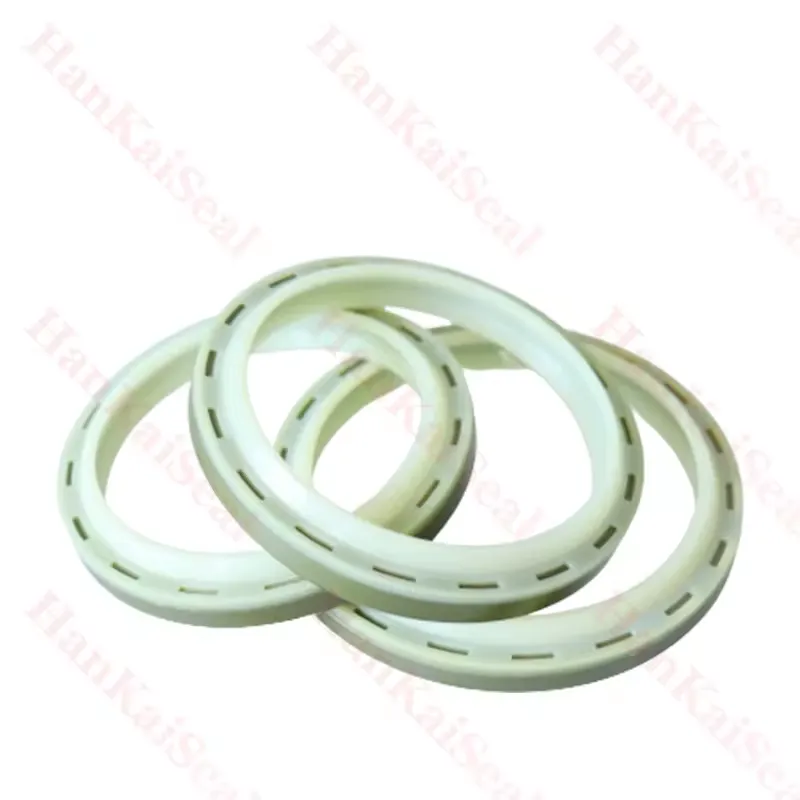Dec . 20, 2024 22:12 Back to list
cylinder gland seal
Understanding Cylinder Gland Seals Essential Components in Hydraulic Systems
In the world of hydraulic systems, cylinder gland seals play a crucial role in ensuring the efficient and reliable operation of hydraulic cylinders. These seals not only prevent fluid leakage but also support the movements of the piston within the cylinder. As industries modernize and demand higher efficiency, understanding the function and importance of cylinder gland seals is vital for engineers and maintenance personnel.
What are Cylinder Gland Seals?
Cylinder gland seals, also known as rod seals, are mechanical devices used to seal the space between the moving parts of hydraulic cylinders. They are positioned in the gland (the housing that surrounds the rod) and designed to withstand different pressures and temperatures while preventing hydraulic fluid from leaking out of the cylinder.
These seals are typically made from elastomeric materials, such as nitrile rubber, polyurethane, or fluorocarbon, which provide excellent resistance to wear, temperature fluctuations, and various fluids. The design of a cylinder gland seal is critical; it must create a tight seal without causing excessive friction, which can damage the seal or reduce the system's efficiency.
Importance of Cylinder Gland Seals
1. Leak Prevention The primary function of gland seals is to prevent hydraulic fluid from leaking out of the cylinder. Leaks can lead to fluid loss, reduced efficiency, and even catastrophic failure in hydraulic systems. An effective gland seal ensures that the hydraulic fluid remains contained, thereby maintaining system pressure and performance.
2. Operational Efficiency Well-functioning gland seals enhance the efficiency of hydraulic systems by minimizing energy losses. When seals allow fluid to escape, the system must work harder to maintain pressure, leading to increased energy consumption. By preventing leaks, gland seals help to lower operating costs and improve overall system performance.
3. Protection of Components Gland seals play a protective role in hydraulic cylinders. They prevent contaminants such as dust, dirt, and moisture from entering the cylinder, which could otherwise cause wear and damage to internal components. This protective function extends the lifespan of the hydraulic cylinder and reduces maintenance costs.
4. Safety In hydraulic systems, pressure management is crucial for safety. A failed gland seal can lead to sudden fluid loss, causing system pressure fluctuations that may result in accidents or equipment damage. By ensuring a secure seal, these components help maintain safe operating conditions.
Types of Cylinder Gland Seals
cylinder gland seal

Cylinder gland seals come in various designs, each tailored for specific applications and conditions. Some common types include
- Single-acting seals These seals are used in applications where pressure is applied in one direction only. They are simpler in design but may not offer the same level of protection against leakage under dynamic conditions.
- Double-acting seals Suitable for systems that apply pressure in both directions, double-acting seals provide enhanced sealing capabilities, making them ideal for more complex hydraulic applications.
- U-cup seals These are popular in low-pressure applications. They resemble a ‘U’ shape, allowing for effective sealing in a compact design.
- X-rings These seals provide a better sealing surface than traditional O-rings and are often used in high-pressure applications. Their unique shape helps distribute pressure more evenly, reducing wear and extending seal life.
Maintenance and Replacement
Regular maintenance of cylinder glands and seals is essential for ensuring the long-term reliability of hydraulic systems. Operators should regularly inspect seals for signs of wear or damage, such as cracks or deformation. If leakage is detected, it may indicate that the seal is failing and requires replacement.
When replacing seals, it's crucial to select the appropriate type for the specific application. Factors such as pressure, temperature, and the type of fluid used in the system should all be considered. Additionally, proper installation practices should be followed to prevent damage during the replacement process.
Conclusion
In conclusion, cylinder gland seals are vital components in hydraulic systems, contributing to leak prevention, operational efficiency, protection of internal components, and overall system safety. By understanding their function and importance, industries can better maintain their hydraulic systems and ensure optimal performance. Regular inspection and maintenance of these seals will lead to improved reliability and longevity of hydraulic equipment, ultimately saving costs in the long run.
-
TCN Oil Seal Metal Ring Reinforcement for Heavy Machinery
NewsJul.25,2025
-
Rotary Lip Seal Spring-Loaded Design for High-Speed Applications
NewsJul.25,2025
-
Hydraulic Cylinder Seals Polyurethane Material for High-Impact Jobs
NewsJul.25,2025
-
High Pressure Oil Seal Polyurethane Coating Wear Resistance
NewsJul.25,2025
-
Dust Proof Seal Double Lip Design for Construction Equipment
NewsJul.25,2025
-
Hub Seal Polyurethane Wear Resistance in Agricultural Vehicles
NewsJul.25,2025
-
The Trans-formative Journey of Wheel Hub Oil Seals
NewsJun.06,2025
Products categories
















